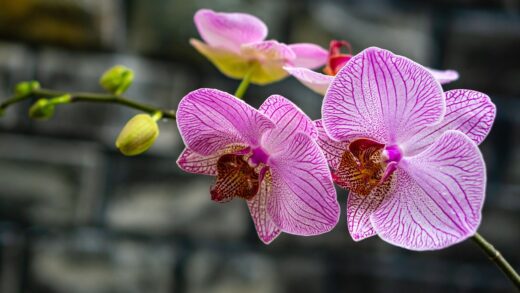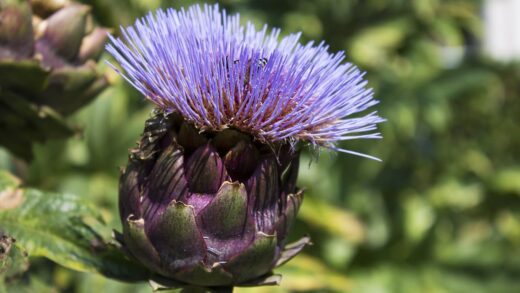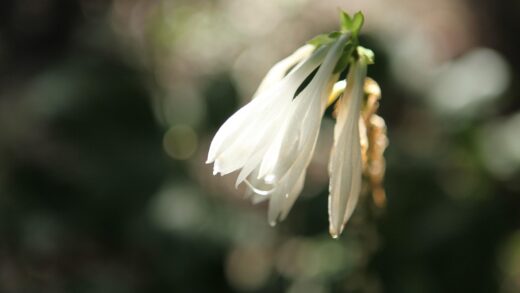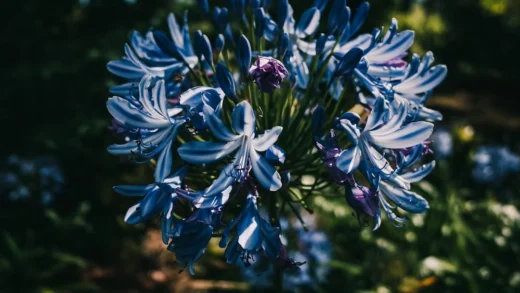One of the most compelling reasons to grow the Burnet Rose is its outstanding natural resilience to many of the common diseases and pests that can plague more modern rose varieties. Its tough, somewhat leathery foliage and vigorous, wild nature make it an inherently low-maintenance and robust shrub. This is not to say that it is completely immune to problems, but the likelihood of serious infestations or infections is significantly lower. The best strategy for managing the health of your Burnet Rose is, therefore, one of prevention. By providing the plant with its preferred growing conditions—namely full sun, excellent soil drainage, and good air circulation—you create an environment where the plant is strong and healthy, and pathogens and pests are less likely to gain a foothold.
The most common diseases that can occasionally affect roses are fungal in nature, such as black spot and powdery mildew. While the Burnet Rose shows strong resistance, it can still be susceptible during periods of weather that are particularly conducive to fungal growth, such as long spells of warm, humid, and wet conditions. Good garden hygiene is a crucial preventative measure. This involves promptly removing any leaves that show signs of infection and cleaning up all fallen leaves and debris from around the base of the plant in the autumn. This reduces the number of fungal spores that can overwinter and reinfect the plant the following spring.
Proper plant placement and pruning also play a vital role in disease prevention. Planting your rose in a location where it receives ample sunlight and has plenty of space around it ensures that air can circulate freely through its branches. This good air circulation helps the foliage to dry quickly after rain or morning dew, making it much more difficult for fungal spores to germinate and infect the leaves. A light, annual pruning to thin out any overly congested areas within the shrub can further enhance this effect.
When it comes to pests, the Burnet Rose is rarely seriously troubled. You might occasionally find common garden pests like aphids on the soft new growth in spring, but healthy plants can typically withstand a minor infestation without any significant harm. Encouraging a healthy garden ecosystem with a diversity of plants will attract natural predators such as ladybugs, lacewings, and hoverflies, which are very effective at keeping aphid populations in check. A reliance on these natural controls is far preferable to the use of chemical pesticides, which can harm beneficial insects.
Common fungal diseases
Black spot is perhaps the most well-known fungal disease of roses. It is caused by the fungus Diplocarpon rosae and appears as dark, circular spots with feathery or fringed edges on the upper surface of the leaves. As the infection progresses, the area around the spots will often turn yellow, and the affected leaves may drop from the plant prematurely. While the Burnet Rose is highly resistant, a severe and prolonged period of wet weather can sometimes allow the disease to take hold. Prevention is key: water at the base of the plant to keep the foliage dry and ensure good air circulation.
If you do see signs of black spot, act quickly to remove the infected leaves from the plant and clear any that have fallen to the ground. This will help to reduce the spread of the spores to healthy foliage. For persistent problems in very humid climates, fungicides containing sulfur or copper can be used as a preventative spray, but these should be a last resort. A healthy, well-sited plant will usually shrug off a minor infection without the need for chemical intervention.
Powdery mildew is another fungal issue that can occasionally appear on roses, presenting as a distinctive white, powdery coating on leaves, stems, and flower buds. Unlike black spot, which thrives in wet conditions, powdery mildew is often more prevalent in warm, dry weather, especially when the nights are cool and humid. It can be more of a problem on plants that are in a shaded location or where air circulation is poor.
Management of powdery mildew is similar to that of black spot. Pruning to open up the shrub and improve air movement is very effective. If you spot a small outbreak, you can sometimes wash it off with a strong spray of water from a hose in the morning. This physically dislodges the spores and allows the foliage to dry quickly in the sun. Horticultural oils and neem oil sprays can also be effective at controlling the spread of powdery mildew if applied at the first sign of the disease.
Insect pests and their management
Aphids are small, sap-sucking insects that are a common sight in many gardens. They tend to congregate in clusters on the tender new growth and flower buds of roses in the spring. While a large infestation can cause some distortion of the new growth, they rarely pose a serious threat to the overall health of a tough shrub like the Burnet Rose. Often, the problem will resolve itself as natural predators arrive to feast on the aphids.
If you feel the need to intervene, the simplest and most environmentally friendly method is to use a strong jet of water from a garden hose to blast the aphids off the plant. This is often sufficient to control their numbers. You can also wipe them off with your fingers. For more persistent populations, a spray of insecticidal soap can be used. This is a contact insecticide that is effective against soft-bodied insects like aphids but has a low impact on beneficial insects once it has dried.
Rose sawflies are another pest you might encounter. It is not the adult fly but its caterpillar-like larvae that cause the damage. The larvae feed on the leaves, often “skeletonizing” them by eating the soft tissue and leaving the network of veins behind. This can make the foliage look unsightly, but a mature, healthy Burnet Rose can easily tolerate a moderate amount of this type of damage and will produce new leaves.
Control of sawfly larvae is best done by hand-picking them off the leaves when you spot them. Since the larvae are usually found on the undersides of the leaves, it is important to inspect your plants regularly if you suspect their presence. In most cases, the damage is purely cosmetic, and the infestation will run its course without any long-term harm to the plant. Chemical pesticides are generally not necessary and should be avoided to protect the wider garden ecosystem.
Other potential problems
While the Burnet Rose is resistant to many major diseases, it is not immune to root rot if planted in the wrong conditions. Root rot is not a disease in the traditional sense but rather a condition caused by a lack of oxygen in the soil due to waterlogging. This plant’s roots are adapted to well-drained, sandy soils and will quickly begin to decay if they are sitting in constantly wet, heavy clay soil. The symptoms of root rot above ground include wilting, yellowing leaves, and stunted growth, which can ironically be mistaken for a lack of water.
The only way to manage root rot is through prevention. It is absolutely crucial to plant the Burnet Rose in a location with excellent drainage. If your garden has heavy clay soil, you must amend it thoroughly with grit and organic matter to improve its structure before planting. If you suspect an established plant is suffering from root rot, the best course of action is to carefully dig it up, inspect the roots, trim away any that are brown and mushy, and replant it in a more suitable, better-draining location or a raised bed.
Rose rust is another fungal disease, although it is less common on the Burnet Rose than on other types. It appears as small, orange or rust-coloured pustules on the undersides of the leaves. As the disease progresses, the upper surfaces of the leaves may develop yellow or pale spots. Similar to other fungal diseases, rust thrives in moist conditions and can be managed by promoting good air circulation and keeping the foliage as dry as possible. Any infected leaves should be promptly removed and destroyed to prevent the spread of spores.
Cane borers are insects whose larvae tunnel into the canes of roses. They typically enter through a cut end of a cane after pruning. As the larva tunnels downwards, the cane will wilt and die from the tip back. While not a common problem, if you notice a cane suddenly wilting, inspect it for a small entry hole. The only control is to prune the affected cane off well below the damaged section until you find healthy, white pith in the center of the cane.
The importance of prevention
The overarching principle for keeping your Burnet Rose healthy is prevention. A strong, vigorous plant growing in its ideal conditions is far less likely to succumb to diseases or be seriously affected by pests. This begins with selecting the right planting site. A location with at least six hours of direct sun, well-draining soil, and good air movement will solve the vast majority of potential health problems before they even start.
Good garden sanitation is another pillar of preventative care. This means being diligent about cleaning up fallen leaves and other debris from around your roses, especially in the autumn. Many fungal diseases, like black spot, can survive the winter on this fallen organic matter, ready to release a fresh batch of spores in the spring. By removing this material, you break the life cycle of the pathogen and significantly reduce the chance of an infection the following year.
Encouraging biodiversity in your garden is a powerful, natural form of pest control. By planting a wide variety of flowering plants, you will attract a diverse range of beneficial insects, including predators and pollinators. Ladybugs, lacewings, hoverflies, and parasitic wasps all prey on common garden pests like aphids, providing a continuous and free pest management service. Avoiding the use of broad-spectrum chemical pesticides is essential to protect these valuable allies.
Finally, proper watering and feeding contribute to a plant’s overall resilience. Watering at the base of the plant keeps the foliage dry and less hospitable to fungi. Avoiding over-fertilisation, particularly with high-nitrogen feeds, prevents the growth of soft, succulent foliage that is an easy target for both sap-sucking insects and diseases. By focusing on these preventative fundamentals, you can enjoy the beauty of your Burnet Rose with minimal trouble.
📷No machine-readable author provided. Svdmolen assumed (based on copyright claims)., CC BY-SA 3.0, via Wikimedia Commons



















